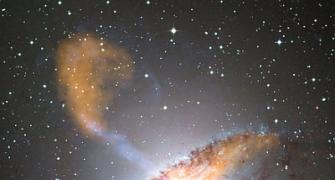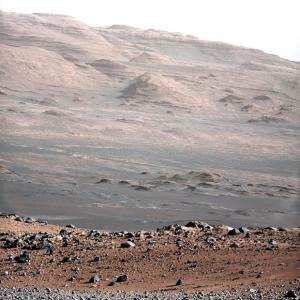When it comes to landmark achievements in space exploration, July 14 (India time) is one for the history books -- the day humanity reached Pluto for the first time.
NASA’s New Horizons spacecraft will fly within 8,000 miles of Pluto and reveal the last world in the solar system.
Ahead of this momentous event, learn why the spacecraft won’t be stopping at the dwarf planet and much more.

1) What is the Pluto flyby?
On Tuesday evening (India time), an unmanned Nasa spacecraft, New Horizons, will make a close shave past Pluto, allowing scientists a close glimpse of the dwarf planet’s surface for the first time. The unmanned vehicle was launched in 2006 when Pluto still reigned as a full-fledged planet. It took nine and a half years for the spacecraft to make the journey to the outer edges of the solar system. Along the way, New Horizons performed flyby observations of Jupiter and its moons in 2007, when the massive planet gave the spacecraft a gravity boost.
2) Why a flyby? Why not slow down or orbit Pluto?
To get New Horizons all the way to Pluto in a reasonable amount of time -- less than a decade -- engineers had to send it there at an extremely high speed: around 31,000 miles per hour. That meant the craft had to be very light (about 1,000 pounds) -- a bigger one would have been impossible to accelerate to that velocity. That, in turn, meant that New Horizons couldn't carry much fuel, not nearly as much as would be needed to put it in orbit around Pluto
New Horizons will fly by Pluto at an extremely high speed, traversing its diameter in a little less than three minutes. Fourteen minutes later, it’ll make its closest approach to Pluto’s moon Charon and take photos of its other four moons, as well.

3) Why haven’t we ever gotten a good picture of Pluto?
Pluto is too small and dim for even our sharpest Earth-based eyes to get a good look at: It's only about two-thirds as wide as Earth’s moon. Even dwarf planet Ceres, which lives much closer to Earth, is too small to be anything but a blurry blob in Hubble pictures.
4) What have we learned so far?
The New Horizons team has already solved one of the biggest mysteries about Pluto: its size. On Tuesday, NASA announced that Pluto is 2,370 kilometre (about 1,473 miles) in diameter, give or take 20 m.
We also learnt that Pluto has an icy polar cap, which is made of a mix of frozen methane and nitrogen gases.
5) What are we going to learn about Pluto?
New Horizons will take a good, detailed look at Pluto and its large moon Charon. It will also help in determining Pluto’s terrains and composition. Additionally, it will also help in understanding how the Pluto system formed and evolved.

Senator Barbara Mikulski of Maryland holds a bumper sticker given to her by members of the New Horizons team at the Johns Hopkins University Applied Physics Laboratory. Photograph: NASA
6) When can one see the Pluto system in high resolution?
NASA has been releasing incrementally better photos of Pluto and Charon for weeks now, but as New Horizons gets closer, the resolution of these photographs will increase exponentially.
Finally, at about 5.19 pm (India Standard Time), New Horizons, will fly by Pluto. A briefing by the experts will be subsequently aired between 5.30 pm and 6.30 pm.
Photos will take a bit longer because of New Horizons’ extremely low rate of data transmission. This is because of the huge distance between Pluto and Earth, and it means that it’ll take more than 42 minutes for New Horizons to fully transmit an image that’s 1024 pixels wide.
7) What will New Horizons do after it passes Pluto?
After New Horizons passes Pluto, it will continue sailing on into the Kuiper Belt, which is a vast, icy debris ring outside the orbit of Neptune.
8) What objects are headed for Pluto?
Along with the scientific equipment aboard New Horizons, the spaceship is carrying the ashes of Clyde Tombaugh, the astronomer who discovered the dwarf planet Pluto in 1930.
Also on board is a 1991 US postage stamp that says, “Pluto Not Yet Explored”. Two state quarters on the flight -- Maryland and Florida -- represent the headquarters for flight control and launch site.
The ‘Send Your Name to Pluto’ CD-ROM with more than 434,000 names of people who wanted to participate in this exploration has also been sent.










